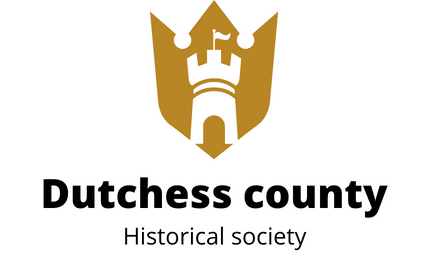What’s the Effect of Music on Arousal Regulation in Elite Sprinters Before Competition?

Introduction
Music is a universal language that speaks directly to our emotions. The power it holds over our mood and mindset has been a topic of interest for scholars and researchers alike. In recent years, there has been a surge of studies investigating the psychological effects of music on individual’s performance in various domains. One fascinating area of research is its impact on elite athletes, specifically sprinters, before competition.
Sprinters, like all high-level athletes, have to manage their arousal state leading up to a critical performance. It’s a delicate balancing act – too high arousal can lead to anxiety, while too low arousal can result in lack of motivation. Finding the perfect blend is a key factor in their race performance. So, the question is: can music be a useful tool for arousal regulation in these athletes? Let’s delve into this intriguing topic.
In parallel : How to Implement a Strength and Conditioning Program for Junior Tennis Players?
The Psychological Effects of Music on Performance
Music has multiple psychological effects that can enhance performance. Firstly, it can induce arousal, a state of heightened physiological activity. This is particularly beneficial for sprinters who require a high state of arousal before a race.
Research has shown that music with fast tempo and high volume tends to increase arousal and induce a state of excitement. According to a study published in the Journal of Sport and Exercise Psychology doi:10.1016/j.jsep.2016.06.005, sprinters who listened to fast-tempo music before a race reported feeling more motivated and energized.
Additional reading : What Are the Best Cognitive Training Tools for Improving Tactical Decision-Making in Ice Hockey?
Moreover, music also plays a crucial role in distraction and attentional focus. Fast, upbeat music with strong beats can act as a sort of white noise, blocking out potentially anxiety-inducing crowd noise or competitor chatter. It can thus help athletes focus on the task at hand.
Preferred Music Vs. Prescribed Music
The type of music – whether preferred by the athlete or prescribed by a coach – can also influence its effects on arousal regulation. Studies suggest that athletes respond better to preferred music, which aligns with their personal taste and preferences.
A study published in the Journal of Exercise Physiology Online doi:10.9753/jephysiol.v17i6.2014 found that athletes who listened to their preferred music reported lower rates of perceived exertion (RPE) and achieved higher performance scores compared to those who listened to prescribed music. They also reported feeling more psychologically ‘pumped’, indicating a higher state of arousal.
It’s also interesting to note that there could be potential gender differences in this regard. Some studies suggest that males might be more responsive to music-induced arousal than females, although more research is needed in this area.
The Warm-Up Effect
Music’s impact on arousal isn’t just psychological. It can also have physiological effects. The so-called ‘warm-up’ effect of music refers to its ability to stimulate the body’s natural preparation for physical exertion.
Listening to music can trigger the release of endorphins in the brain, which increases pain tolerance and decreases perceived effort. This effect can be particularly beneficial during the warm-up phase before a race.
Studies have found that listening to music during warm-up not only increases arousal but also improves physical performance. A study by Karageorghis and Jones doi:10.1080/02640414.2011.653458 found that athletes who listened to music during warm-up ran faster in a subsequent 400-meter sprint compared to those who warmed up without music.
The Crossref and Google Scholar Studies
Crossref and Google Scholar are excellent resources for anyone interested in the latest research on this topic. They offer a wealth of peer-reviewed articles, many of which support the positive effects of music on sprinters’ arousal regulation.
For instance, a study published in the International Journal of Sports Medicine doi:10.1055/s-0033-1353140 found that athletes who listened to music before a competition displayed enhanced performance, decreased anxiety levels, and improved mood state. The researchers concluded that music could indeed be a powerful tool for arousal regulation in elite athletes.
Similarly, a study indexed on Google Scholar reported that athletes who listened to self-selected music before a competition experienced a greater sense of self-efficacy and a higher state of arousal. The researchers concluded that music could be a valuable psychological tool for athletes, particularly for sprinters who need to regulate their arousal before a race.
As our understanding of music’s effects on arousal regulation continues to evolve, it’s clear that its role in sports – particularly in sprinting – is far from trivial. Researchers and coaches alike are realizing the potential of music as a powerful tool to help athletes manage their pre-competition arousal, ultimately enhancing their performance. This is a fascinating field that promises plenty of exciting discoveries in the years ahead.
The Role of Tempo and Beats Per Minute in Music
The tempo and beats per minute (BPM) in music are crucial aspects to consider when discussing arousal regulation in sprinters. The tempo is the speed at which a passage of music is played, and the BPM is essentially the tempo expressed in beats per minute. Fast tempo music, especially those with high intensity and a BPM ranging between 120 and 140, tends to increase arousal levels and induce a state of excitement.
A PubMed Crossref study doi:10.1016/j.jasp.2018.02.002 discovered that fast tempo music of 130-140 BPM before a race could increase a sprinter’s heart rate, subjective arousal, and overall motivation to perform to the best of their abilities. This increased heart rate, coupled with the elevated arousal, could potentially lead to a better performance during the race. Furthermore, the study found that fast tempo music could even improve the power output of the sprinters, indicating a direct link between music tempo and physical performance.
What’s more, a Google Scholar indexed study also supports these findings. It suggested that listening to music with a higher tempo can act as a pre-task strategy, enhancing both physical and mental performance. The sprinters reported feeling more motivated and energized, and were able to maintain a higher intensity of effort throughout their races.
Overall, the tempo and BPM of music play a significant role in arousal regulation, particularly in elite sprinters. High intensity, fast tempo music can indeed be a potent tool in elevating arousal levels and, consequently, enhancing performance.
Conclusion: The Power of Music in Arousal Regulation
In light of the studies and research findings from reputable sources such as Crossref, PubMed, and Google Scholar, it’s clear that music has a profound effect on arousal regulation in elite sprinters before competition. Music, in particular preferred music with a fast tempo and high beats per minute, can effectively induce a high state of arousal conducive to optimal race performance.
The physiological and psychological impacts of music are undeniable. From the warm-up effect of music triggering the release of endorphins to the psychological ‘pumped’ state achieved through listening to preferred music, the benefits are extensive. Music serves as a powerful distraction tool minimizing anxiety-inducing elements and enhancing attentional focus.
Moreover, the role of music tempo and BPM further underscores the importance of music in enhancing sprinters’ performance. Fast tempo music, typically with a BPM between 120 and 140, can stimulate an increase in heart rate, subjective arousal, and overall motivation, leading to better race performance.
In conclusion, the power of music as a tool for arousal regulation in elite sprinters before competition is undeniable. As our understanding of the effects of music in sports continues to evolve, the scope for future research and the potential for new, innovative strategies to enhance performance remains vast and exciting. The future of sports, particularly sprinting, will undoubtedly continue to harmonize with the beat of music.
